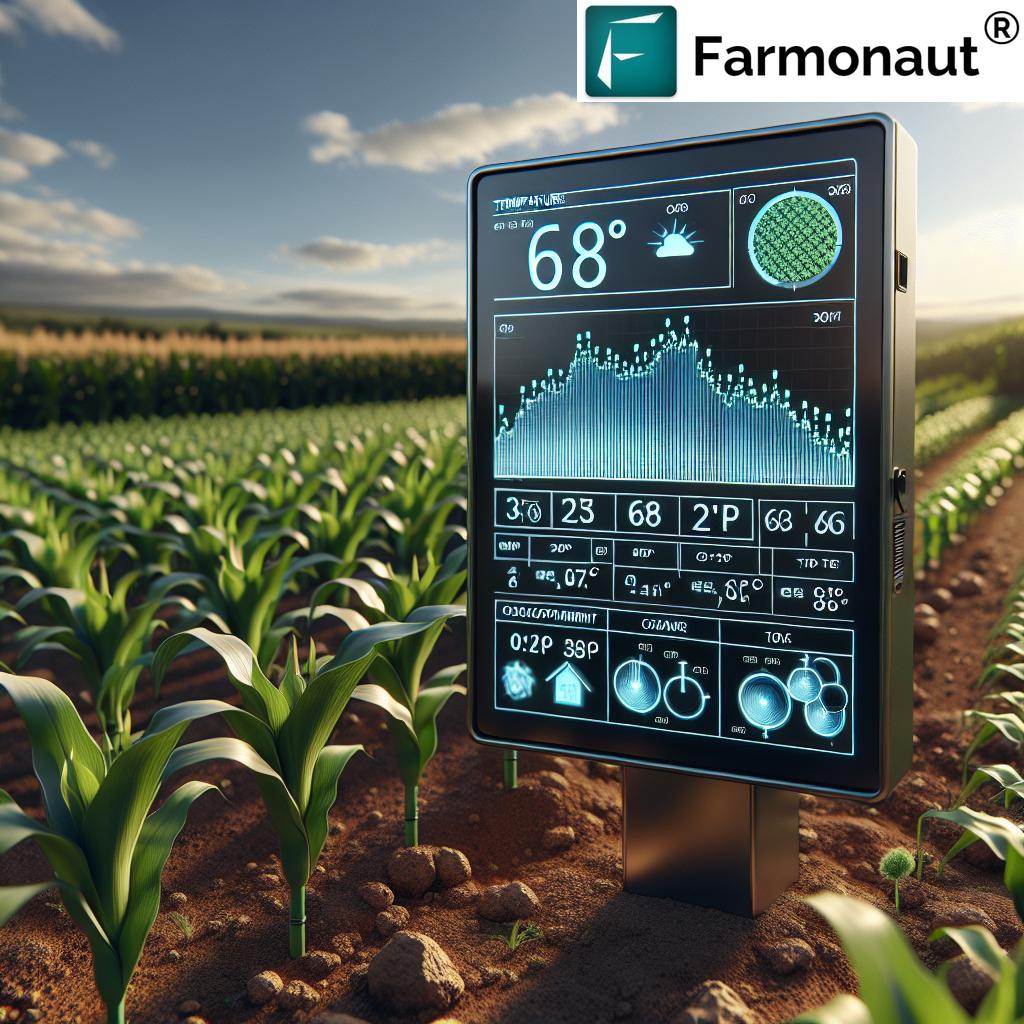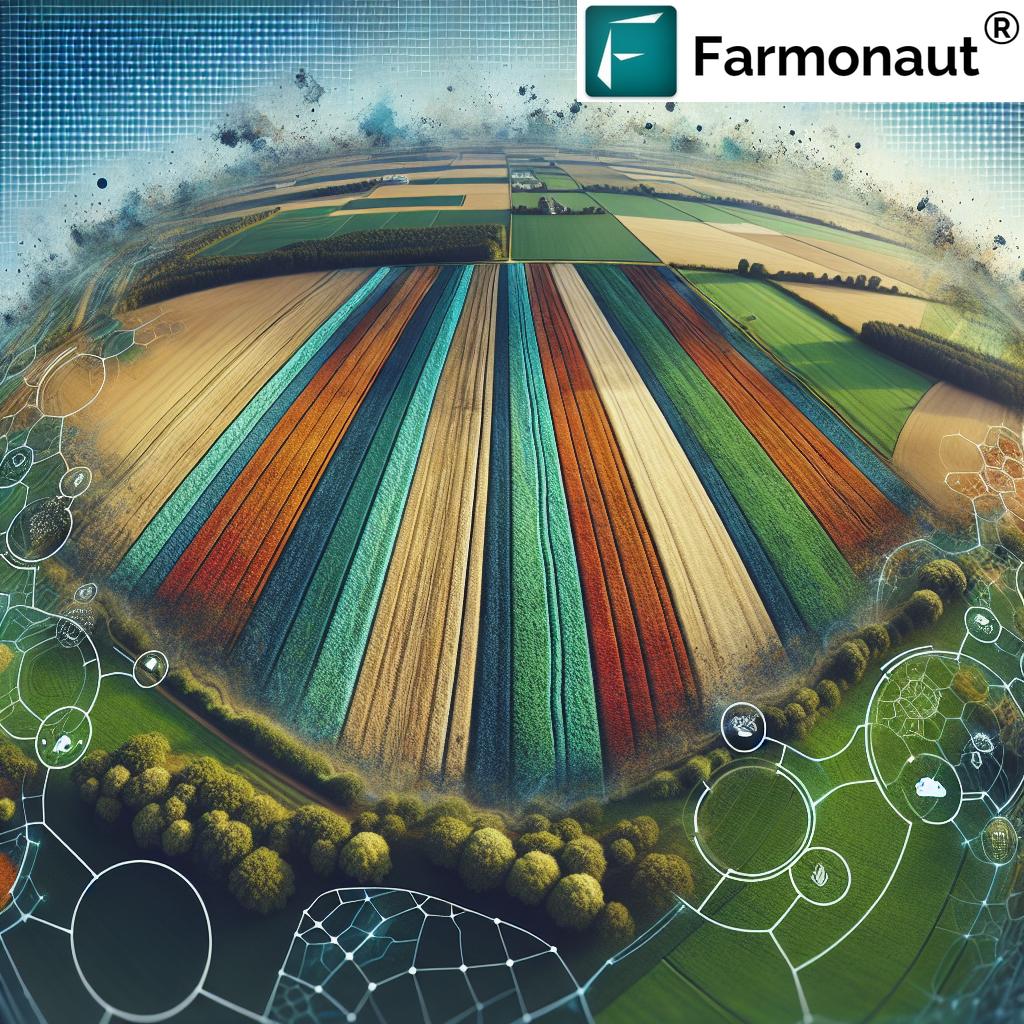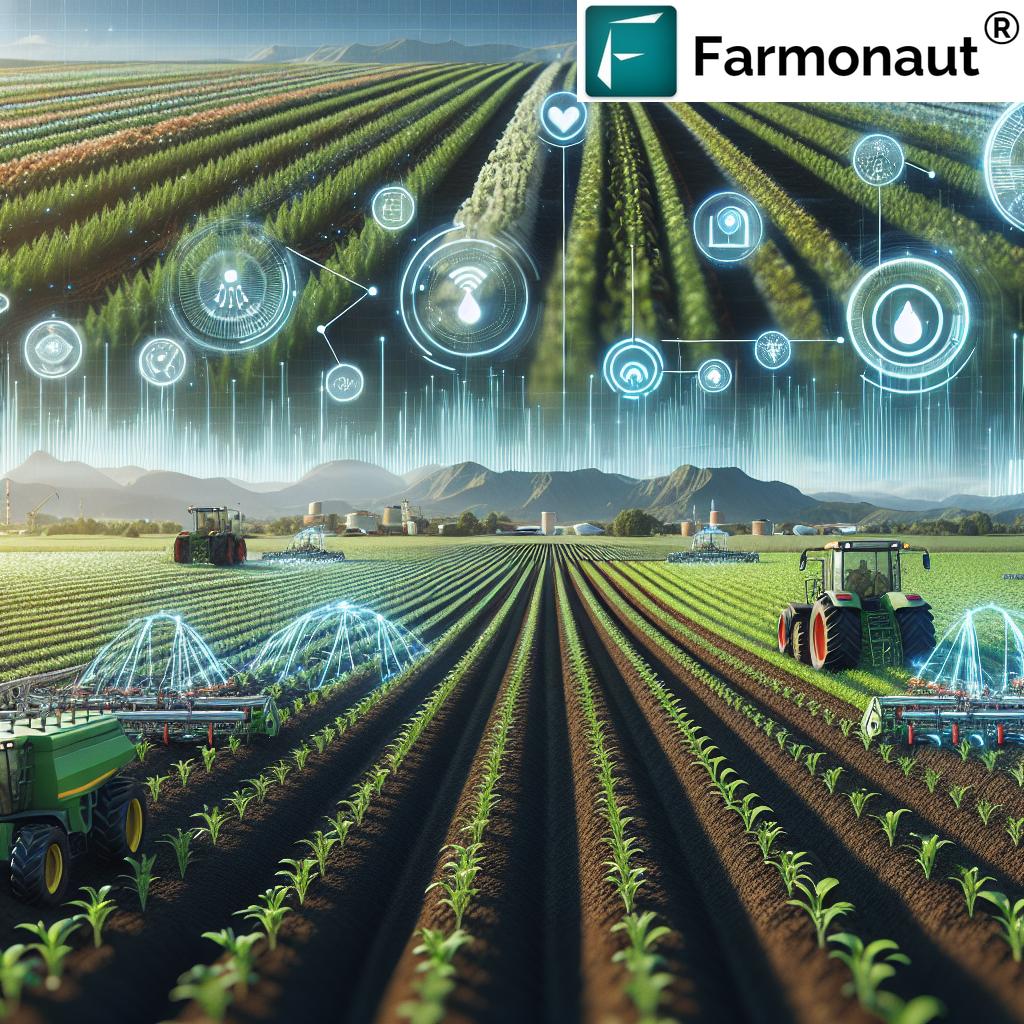Advantages of High-Horsepower Tractors in Farming: Efficiency, Sustainability & Resilience for 2025
“High-horsepower tractors can increase fieldwork productivity by up to 30% compared to standard models.”
- Introduction: The Rapidly Evolving Landscape of Agriculture (2025)
- Key Advantages of High-Horsepower Tractors in Modern Farming
- Comparative Advantage Table: High-Horsepower Vs. Standard Tractors
- Advantages of Agriculture Farming: The Cornerstone of Global Food Security
- Advantages of Dry Farming: Water-Smart Solutions for a Changing World
- Integrating High-Horsepower Tractors with Sustainable Dry Farming Techniques
- Embracing Technology & Innovation in Modern Farming (2025 and Beyond)
- About Farmonaut: Enhancing Agricultural Efficiency & Sustainability
- FAQs: High-Horsepower Tractors, Dry Farming, and Sustainable Agriculture
- Conclusion: Advancing into the Future of Agriculture
Introduction: The Rapidly Evolving Landscape of Agriculture (2025)
In the rapidly evolving landscape of agriculture, technological advancements continue to revolutionize how farmers approach efficiency, productivity, and sustainability. As we move into 2025 and beyond, a wave of innovations is shaping both modern farming operations and traditional dry farming techniques. Among these innovations, the advantages of high-horsepower tractors in modern farming are increasingly clear: these machines have emerged as indispensable assets in contemporary agriculture, offering operational agility and empowering sustainable scope and scale for farmers worldwide.
Today, high-horsepower tractors—typically ranging from 200 to over 600 horsepower—are at the core of enhancing fieldwork, soil management, and sustainability. Their role is pivotal in driving gains in productivity and resource efficiency, meeting the challenges of modern agriculture, and empowering farmers to address climate change and food security concerns.
This comprehensive guide explores the interconnected facets of high-horsepower tractors, advantages of agriculture farming, and advantages of dry farming. We’ll discuss their impact on operational efficiency, sustainable practices, and resilience, with practical insights for 2025 and actionable steps for integrating new technology in your agricultural operations.
Key Advantages of High-Horsepower Tractors in Modern Farming
High-horsepower tractors are designed to handle extensive acreages, cultivate soil, plant seeds, apply fertilizers, and harvest crops efficiently—often supporting implements and techniques that smaller tractors cannot. The advantages of high-horsepower tractors in modern farming are especially pronounced when tackling the myriad operational challenges faced by farmers in 2025.
1. Increased Efficiency & Productivity
- Fieldwork Completion: High-horsepower tractors enable farmers to complete fieldwork faster and with greater consistency, especially during critical narrow planting and harvesting windows.
- Operational Scale: These machines are optimized for large fields—allowing fewer passes across the field and reducing overall labor required for tillage, planting, and harvest.
- Adaptability to Weather: When farming is affected by unpredictable weather patterns or climate shifts, the rapid pace enabled by high-horsepower tractors can help farmers act quickly, securing better yields.
Example: A 350 HP tractor pulling a multi-row planter can cover large fields in a single day, keeping operations on schedule despite tightening weather windows.
2. Enhanced Power, Versatility, & Technology
- Power for Large Implements: High-horsepower tractors are built to power large, heavy implements—enabling deep tillage, wide planters, or advanced precision sprayers that boost overall productivity.
- Advanced Hydraulics & Integrated Features: Most models come with advanced hydraulics, computerized systems for hydraulic management, GPS-guided auto-steering, and full compatibility with technology-powered implements.
- Versatility: With the right attachments, these tractors are suitable for diverse crops, soil types, and farming systems (including dry farming), making them the multifaceted center of modern agricultural operations.
3. Reduced Labor & Operational Costs
- Labor-Saving: By outperforming smaller tractors, high-horsepower models require fewer operators—lowering overall labor costs.
- Fuel & Input Reduction: Fewer passes on the field means lowering fuel usage and reduced wear-and-tear—ultimately reducing per-acre operational costs and boosting the cost-effectiveness of sustainable practices.
- Resource Optimization: The advanced features and monitoring technology available in these tractors allow more precise application of inputs, reducing waste and further lowering expenses.
Machines with integrated fleet management and real-time monitoring solutions—like those offered by Farmonaut—let managers optimize logistics, ensuring vehicles are used efficiently, costs are kept in check, and field operations remain streamlined.
4. Improved Soil Management & Sustainable Practices
- Precision Farming: High-horsepower tractors equipped with variable rate technology (VRT) and precision GPS can apply seeds, fertilizers, and pesticides only where needed—avoiding over-application and boosting overall soil health.
- Sustainable Tillage: These tractors support conservation tillage and reduced-tillage systems, helping to minimize soil compaction and protect sensitive soil structure.
- Carbon Sequestration: By facilitating practices like minimal disturbance tillage and cover cropping, high-horsepower tractors can meaningfully contribute to lower emissions and sustainable agriculture goals.
Farmonaut’s environmental impact solutions, such as carbon footprint monitoring, help producers track sustainability metrics and eco-impact—further empowering sustainable decision-making.
“Modern tractors reduce fuel consumption by nearly 15% per acre, optimizing efficiency in sustainable dryland farming.”
Comparative Advantage Table: High-Horsepower vs Standard Tractors
For a comprehensive view of how high-horsepower tractors align with the broader needs of modern, dry, and sustainable farming, compare the key performance metrics below.
| Performance Metric | High-Horsepower Tractors | Standard Tractors |
|---|---|---|
| Estimated Fuel Efficiency (liters/acre) |
1.2 – 1.6 Lower per acre due to fewer passes |
1.5 – 2.2 More passes increase consumption |
| Average Field Coverage per Day (acres) |
150 – 300 acres Suitable for large/extensive acreages |
40 – 100 acres Best for small/medium plots |
| Typical Operating Costs ($/acre) |
$9 – $15 Lower labor, higher automation |
$12 – $22 Higher labor, more passes needed |
| Soil Impact | Low–Medium Advanced technology reduces compaction |
Medium–High Higher risk with repeated field trips |
| Suitability for Dry Farming | Yes Enables timely operations and precision input |
No Slower; may miss critical rain windows |
| Contribution to Sustainable Practices (Estimated CO₂ Reduction, %) |
15–20% Supports precision ag and reduced tillage |
5–8% Limited by scope and tech |
By enabling faster fieldwork, lower fuel consumption, and superior support for sustainable practices, high-horsepower tractors provide a significant advantage in modern farming compared to standard counterparts.
Advantages of Agriculture Farming: The Cornerstone of Global Food Security
Above and beyond tractors and technology, the advantages of agriculture farming are far-reaching for society and the environment. In 2025, agriculture will continue to play a pivotal role in:
1. Ensuring Economic Stability & Job Creation
- Agriculture sustains millions of livelihoods worldwide.
- It supports ancillary sectors—like machinery, transport, and food processing—spurring economic growth and security in both rural and urban settings.
2. Providing Food Security & Nutrition
- Modern agricultural farming delivers a diverse supply of crops to meet dietary needs and reduce hunger risks as populations expand.
- Food security is fortified when farms use adaptable practices that safeguard yields from the volatility of climate change and extreme weather.
3. Promoting Sustainable Land Use & Biodiversity
- Modern farming techniques like crop rotation, conservation tillage, and integrated pest management support biodiversity and long-term soil health.
- These practices enhance agricultural resilience, ensuring land remains productive and ecologically balanced.
4. Supporting Carbon Sequestration & Climate Resilience
- Responsible farming—including cover cropping and minimized tillage—enables carbon sequestration, repositioning agriculture as a net positive player in climate impact mitigation.
- Investing in sustainable practices is critical to achieving international climate goals and reducing the footprint of global food production.
Environmental monitoring technologies, like those offered by Farmonaut, provide detailed insights into crop health, soil condition, and carbon dynamics, empowering agricultural stakeholders to make sustainable, resilient decisions for the future.
Advantages of Dry Farming: Water-Smart Solutions for a Changing World
As water scarcity becomes increasingly acute in many regions worldwide, the advantages of dry farming are more evident than ever for operational efficiency, environmental health, and food security. In 2025 and beyond, dry farming—the cultivation of crops without supplemental irrigation, relying solely on rainfall—is an essential technique for climate adaptation and resilient agriculture.
Key Benefits of Dry Farming
- Water Conservation:
- Dry farming minimizes water usage, conserving this critical resource and preserving natural aquifers for future generations.
- By relying on rainfall and soil moisture management, dry farming reduces the environmental and financial costs associated with irrigation infrastructure.
- Lower Production Costs:
- With no need for extensive irrigation or pumping equipment, farmers can lower operational expenses while maintaining productive output.
- Crop Resilience & Health:
- Crops in dry farming systems develop deeper roots and improved drought tolerance, becoming more resilient to the challenges of climate variability and weather extremes.
- Such root systems also contribute positively to soil structure and long-term soil health.
- Improved Soil Stewardship:
- Dry farming encourages reduced tillage, fallowing, and careful residue management—methods proven to maintain soil moisture and ecosystem stability.
Farmonaut’s real-time soil and moisture monitoring empowers farmers to make informed choices in dry farming regions, maximizing yields while preserving essential natural resources.
Integrating High-Horsepower Tractors with Sustainable Dry Farming Techniques
The synergy between high-horsepower tractors and sustainable farming practices—like dry farming—unlocks new pathways for food security and resilience in 2025 and beyond. Here’s how:
1. Timely Field Operations Aligned with Rainfall
- In dry farming systems, planting and soil preparation must be completed within very narrow moisture windows. High-horsepower tractors, with their ability to rapidly cover large acreages, help farmers meet these timelines and make the most of limited rainfall.
2. Enabling Conservation Tillage for Soil Health
- Conservation tillage reduces evaporation, preserves residues, and guards soil organic matter.
- High-horsepower tractors make it easier to handle large, modern no-till or reduced-till implements, minimizing soil disturbance to maintain moisture and structure—both critical for dryland success.
3. Precision Input Application for Sustainability
- With advanced GPS, auto-steering, and variable rate technology, high-horsepower tractors allow precise spacing and depth placement of seeds and fertilizers, further optimizing scarce soil moisture and reducing input waste.
- This targeted approach yields both higher productivity and lower environmental impact.
4. Large-Scale Monitoring and Management
- Leveraging platforms like Farmonaut’s Satellite Monitoring App enables farm managers to monitor crop health, soil moisture, and input effectiveness in real time—a significant edge in both large-scale commercial and specialized dry farming systems.
- For farmers seeking to scale their operations, Farmonaut’s Large Scale Farm Management Tool provides actionable insights, operational tracking, and resource optimization in modern agricultural scenarios.
Embracing Technology & Innovation in Modern Farming (2025 and Beyond)
As we look to 2025 and the future of modern agriculture, technology and innovation are the twin engines driving enhanced productivity and sustainability.
Leading-Edge Tools Transforming Agriculture
-
Satellite Imagery & Data-Driven Farm Management:
Satellite technology empowers farmers to make more informed, precise decisions than ever before—tracking variability in soil, weather patterns, and crop health.
Farmonaut’s platform provides real-time satellite monitoring, AI-powered advisory, and resource management solutions for enterprises and small producers alike. -
Fleet & Resource Management:
Monitoring and optimizing tractors and machinery can reduce downtime, lower operational costs, and improve on-the-fly managerial decisions.
Farmonaut’s Fleet Management system gives users actionable data to increase the lifespan and productivity of their equipment. -
Supply Chain Traceability:
Transparency from field to table builds trust for consumers and regulators alike.
Farmonaut’s Blockchain-Based Traceability solutions allow agricultural businesses to prove the authenticity and quality of their products at every stage. -
Financial & Insurance Verification:
Satellite-based verification streamlines the process of crop loans and insurance, making financing easier and reducing the risk of fraud.
Farmonaut connects financial institutions with agricultural data via its Crop Loan and Insurance Verification Tools.
To build and scale smart, sustainable agricultural systems, developers can utilize Farmonaut’s API and refer to the guide in our API Developer Docs for seamless integration.
About Farmonaut: Enhancing Agricultural Efficiency & Sustainability
At Farmonaut, we are committed to advancing agricultural productivity, sustainability, and operational efficiency through our affordable range of satellite-driven solutions and AI-powered advisory platforms. We believe high-horsepower equipment and smart digital tools must go hand in hand for modern agriculture to flourish—especially in a future defined by rapid climatic and economic changes.
Our offerings can transform small and large farms alike by providing:
- Real-time monitoring of crop health, soil moisture, and weather risks
- AI-driven, customized advisories for planting, resource management, and harvesting operations
- Blockchain-powered traceability and transparency throughout the agri-supply chain
- Carbon footprint tracking and environmental compliance insights
- Logistics and fleet optimization for machinery and equipment
This technology-powered approach makes modern, dry, and sustainable farming affordable, actionable, and accessible for farmers worldwide.
FAQs: High-Horsepower Tractors, Dry Farming, and Sustainable Agriculture
Frequently Asked Questions
Conclusion: Advancing into the Future of Agriculture
The advantages of high-horsepower tractors in modern farming are profound, touching every aspect of operational efficiency, sustainability, and food security as we cross into 2025 and beyond. Whether by enabling rapid, precise fieldwork, reducing operational costs, or supporting advanced, water-smart agricultural techniques like dry farming, these machines form the reliable backbone of contemporary food production and resource stewardship.
When these technical advances in machinery are integrated with innovative satellite monitoring platforms and data-driven management solutions—like those offered by Farmonaut—farmers worldwide are empowered to meet global food demand, adapt to climate change, and protect natural resources for generations to come.
As we face the future propelled by technology and innovation, the sustainable, resilient, and efficient farm is both an achievable goal and a necessary reality for the modern world.
Ready to power your fields with data and technology? Try Farmonaut’s app and unlock real-time satellite-driven insights for your farm:
For developers and agribusinesses looking to integrate next-gen satellite data, explore our API and developer documentation for advanced integrations: Farmonaut Satellite API Docs.
Let’s make the future of farming more efficient, resilient, and sustainable — together.












